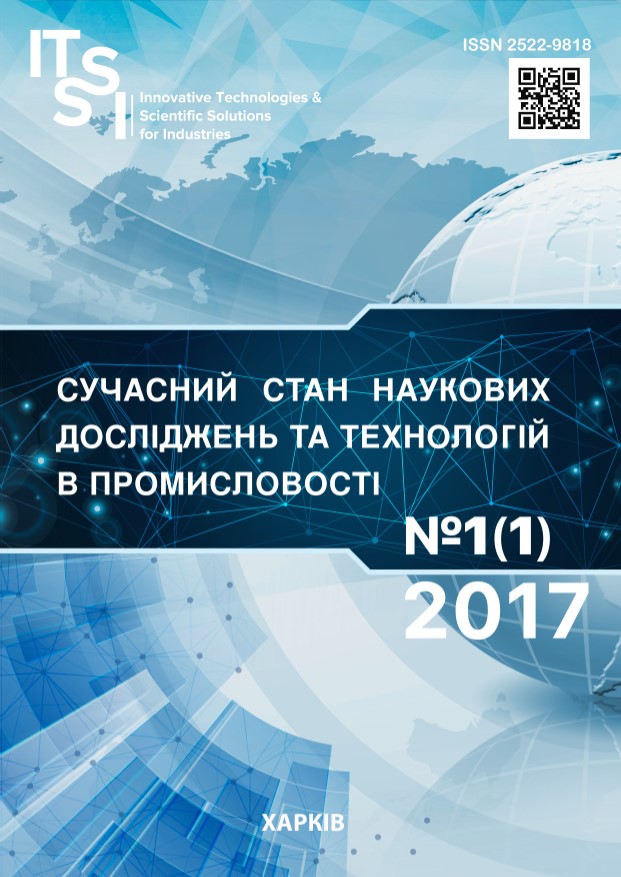THE TASK OF MINIMAX ADAPTIVE MANAGEMENT OF INNOVATIVE PROCESSES AT AN ENTERPRISE WITH RISK ASSESSMENT
DOI:
https://doi.org/10.30837/2522-9818.2017.1.006Keywords:
innovative process, economic and mathematical model, risks, dynamical model, optimization, process of management, minimax adaptive management, guaranteed resultAbstract
The subject matter of the article is a discrete dynamic system that consists of an object whose dynamics is described by a vector linear discrete recurrent relation and is affected by control parameters (managements) and uncontrolled parameters (the vector of risks or interference). It is supposed that the phase conditions of the object, management actions and the vector of risks of the considered dynamic system at any moment of time are constrained by given finite or convex polyhedral sets in corresponding finite-dimensional vector spaces. The objective of the article is to model a task of adaptive management of an enterprise innovative processes (EIP) under risks, which requires to complete the following tasks: to develop a software model of managing EIP under risks; to formalize the task of optimizing the EIP adaptive management and general paradigm of its solving as a guaranteed result based on minimax (optimizing a guaranteed result at a given final moment of time considering risks). In such a case, risks in the system of EIP management are thought of as factors that negatively or even catastrophically affect the results of the processes considered in it. In view of this, it is suggested to use the deterministic approach based of the methods of the theory of optimal management and dynamic optimization. The result of the research is a recurrent algorithm which reduces the initial multi-step task to the implementation of finite sequence of tasks of minimax software management of EIP. In turn, the implementation of each task is reduced to the implementation of finite sequence of only one-step optimizing operations as the tasks of linear convex mathematical and discrete optimization. The following conclusions are made: the suggested method makes it possible to work out efficient numerical procedures that enable computer modelling the dynamics of the target task, developing adaptive minimax management of EIP and obtaining an optimal guaranteed result. The results demonstrated in the work can be used for economic and mathematical modelling and solving other tasks of optimizing processes of data prediction and management under the lack of information and under risks as well as for developing corresponding software and hardware complexes to support efficient managerial decisions in practice.
References
Krasovskiy, N. (1968), Theory of motion control [Teorija upravlenija dvizheniem], Moscow, Nauka, 476 p.
Shorikov, A. (2005), "Algorithm for solving the problem of optimal terminal control in linear discrete dynamical systems" ["Algoritm reshenija zadachi optimal'nogo terminal'nogo upravlenija v linejnyh diskretnyh dinamicheskih sistemah"], Information Technologies in Economics: Theory, Models and Methods: a collection of scientific works, Publishing house Ural State University of Economics, Ekaterinburg, pp. 119-138.
Lotov, A. (1984), Introduction to economic and mathematical modeling [Vvedenie v jekonomiko-matematicheskoe modelirovanie], Nauka, Home Edition of Physical and Mathematical Literature, Moscow, 332 p.
Propoy, A. (1973), Elements of the theory of optimal discrete processes [Jelementy teorii optimal'nyh diskretnyh processov], Science, Home Edition of Physical and Mathematical Literature, Moscow, 368 p.
Ter-Krikorov, A. (1977), Optimal control and mathematical economics [Optimal'noe upravlenie i matematicheskaja jekonomika], Nauka, Moscow, 216 p.
Babenko, V. (2014), Management of innovation processes of processing enterprises of agrarian and industrial complex (mathematical modeling and information technologies): monograph [Upravlinnya innovatsiynymy protsesamy pererobnykh pidpryyemstv APK (matematychne modelyuvannya ta informatsiyni tekhnolohiyi): monohrafiya], V. Dokuchaev Kharkiv National Agrarian University, Machulin, 380 p.
Babenko V. O. (2013), Formation of an economic-mathematical model of dynamics of process of management by innovative technologies at the enterprises of AIC [Formirovaniye ekonomiko-matematicheskoy modeli dinamiki protsessa upravleniya innovatsionnymi tekhnologiyami na predpriyatiyakh APK], Scientific Economic Journal "Actual Problems of Economics", No. 1 (139), University "National Academy of Management", Kyiv, pp. 182-186. EID: 2-s2.0-84929991982
Babenko V. O. (2017), Modelling of factors affecting innovational agricultural activity of enterprises AIC in Ukraine, Scientific bulletin Polesie, No. 1 (9), pp. 115-121. DOI: 10.25140/2410-9576-2017-2-2(10)
Shorikov, A. F., Babenko V. A. (2014), Optimization of the guaranteed result in the dynamic control model of innovative process on the enterprise, Scientific Information and Analytical Economic Journal "The Economy of the Region" ["Optimizatsiya garantirovannogo rezul'tata v dinamicheskoy modeli upravleniya innovatsionnym protsessom na predpriyatii", Nauchnyy informatsionno-analiticheskiy ekonomicheskiy zhurnal "Ekonomika regiona"], No. 1 (37). Institute of Economics, Ural Branch of RAS, pp. 196–202. EID: 2-s2.0-84979807246
Johnson, M. (2010), Seizing the white space, Business Model Innovation for growth and renewal, Harvard Business Press: Boston, Massachussetts.
Downloads
Published
How to Cite
Issue
Section
License
Copyright (c) 2018 Vitalina Babenko, Elena Alisejko, Zoya Kochuyeva

This work is licensed under a Creative Commons Attribution-NonCommercial-ShareAlike 4.0 International License.
Our journal abides by the Creative Commons copyright rights and permissions for open access journals.
Authors who publish with this journal agree to the following terms:
Authors hold the copyright without restrictions and grant the journal right of first publication with the work simultaneously licensed under a Creative Commons Attribution-NonCommercial-ShareAlike 4.0 International License (CC BY-NC-SA 4.0) that allows others to share the work with an acknowledgment of the work's authorship and initial publication in this journal.
Authors are able to enter into separate, additional contractual arrangements for the non-commercial and non-exclusive distribution of the journal's published version of the work (e.g., post it to an institutional repository or publish it in a book), with an acknowledgment of its initial publication in this journal.
Authors are permitted and encouraged to post their published work online (e.g., in institutional repositories or on their website) as it can lead to productive exchanges, as well as earlier and greater citation of published work.














